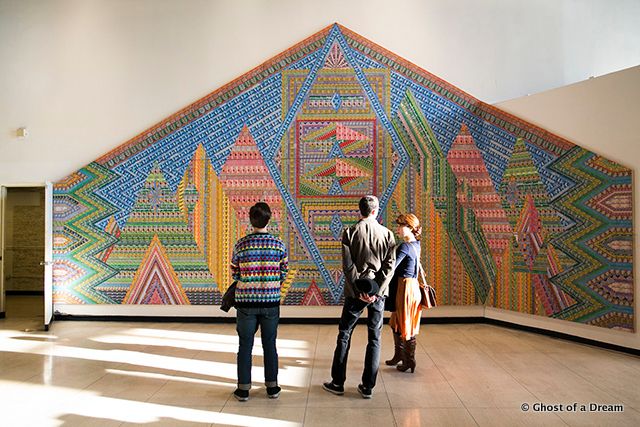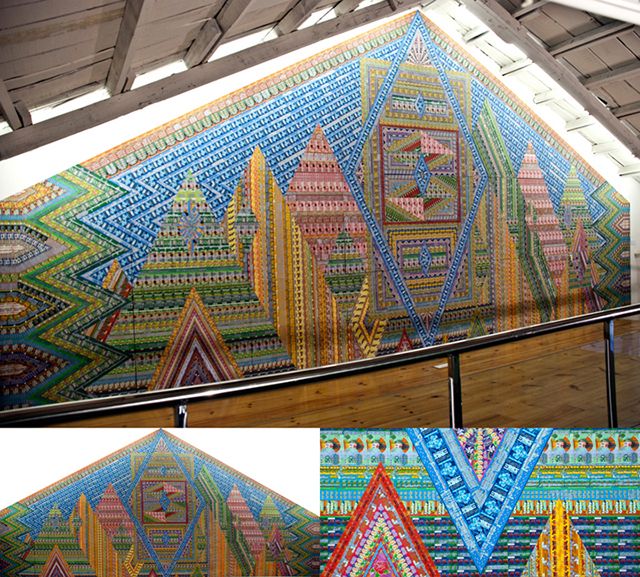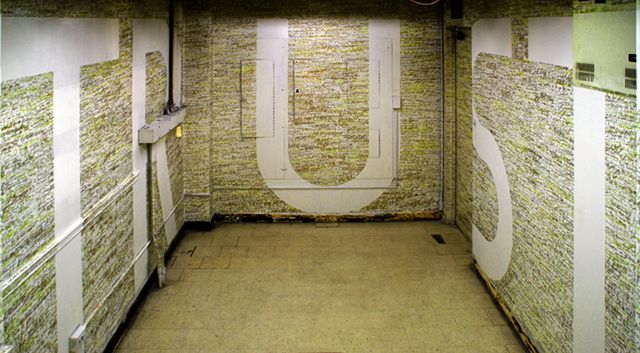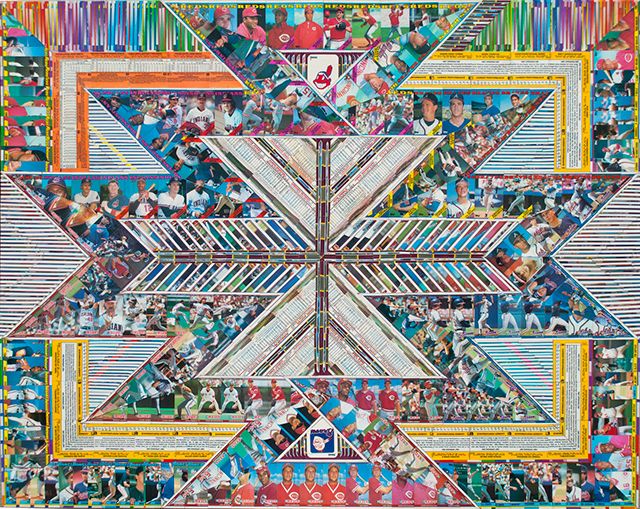100th Anniversary Great Nave Tour at the Cathedral of St. John the Divine
Celebrate the 1925 construction of the stunning nave inside the world's largest Gothic cathedral!


Ghost of a Dream is an art duo comprised of Lauren Was and Adam Eckstrom. Their “Price of Happiness” piece was recently featured in No Longer Empty’s “How Much Do I Owe You?” Exhibition. Untapped Cities sat down with Was and Eckstrom to learn about the inspirations behind Ghost of a Dream’s pieces and the thought process behind documenting society’s hopes and dreams.

Untapped Cities: Tell me a little about yourself and how you go involved with No Longer Empty. How did Ghost of a Dream get together?
Was: Adam and I started working in 2007. We had met in grad school and sort of re-met in the City. He was working as a painter and I was a sculptor. Our studio was right next to each other. We slowly started stealing ideas from each other. Our first project, we were finding these lottery tickets while walking the dog. We would be walking through Brooklyn and we would find these lottery tickets on the ground and we would be thinking about them as these lost hopes. These dreams that were not realized. People were buying them in hopes of escaping into something else, but then, they didn’t. That’s when we started working together. Our first project was a full sized hummer that we made and we used $39,000 worth of lottery tickets which is the amount that the Hummer cost at the time. That was our first project together. That kind of blew up and we didn’t have the intention to start working together. It just kinda happened, amazingly.
We did a project in this amazing oratorio in Milan. It was a fifteenth century church and we got to do a huge installation there. That was awesome. Julia had sent images of our work but we had never met. Through the residency here at Smack Mellon [Studios], she came to the studio to visit and asked us to do the No Longer Empty exhibition. We had made that piece [“The Price of Happiness”] in China and so we just thought it would be perfect for the title of the show. That piece, we had just gotten it back from the show and thought it would be really perfect in that space for the show. There are so few places where you can put that huge piece up so we were really excited when we saw that space and that it would be perfect.
That piece we did when we got to China. We noticed the wealth disparities. They were building these huge high rises and tearing down these neighborhoods. They were having the same housing crisis that we are having here. The condos were just sitting empty because no one could afford to live in them.
Eckstrom: They were taking down the traditional Chinese houses. Everybody was being displaced. They were building condos and nobody was moving into them.
Was: We built the piece in the shape of an American house. If you notice, on the ridge, it is scalloped to reference the tercotta tiles that are on the roofs of a lot of those small houses. We were trying to make it blend with what we saw here in America and the echoes we saw in China, in places that we weren’t expecting echoes to happen.

Untapped Cities: How does your background inform your work?
Eckstrom: I was a painter and Lauren was a sculptor when we started working together.
Was: All of our work is about people’s hopes and dreams. So, all of our materials is that which people either use to escape into their hopes and dreams.
Eckstrom: They are attempting to obtain their hopes and dreams–usually futilely.
Was: When we started working together, it very much changed the arc of my work.
Untapped Cities: How do you decide what to collect to represent people’s hopes and dreams?
Eckstrom: We talk about it. People suggest things. People donate things. We recently made a bunch of baseball collages because a year and a half ago someone donated them. At first we were like, “Um, I don’t know.” Then, over a year, we thought about it and it made sense. A lot of people dream of being baseball players.

Was: And, they are sort of our national heroes. There are sports teams and everyone looks up to these players and everyone wants to be like that.
Eckstrom: But, it takes awhile for us to go through that process. It takes awhile before the theory is really strong for us and we believe in it. A lot of times we have to collect for a long time before we collect a piece. We collect for a year or two.
Was: For example, we went to Vegas. In Vegas they hand out these “nudie cards” basically advertising the prostitutes that will come to your room. We went to Vegas, initially, trying to collect casino cups and other gambling paraphernalia. We got there and these cards were everywhere. Then, we thought about it. Everyone dreams of this “perfect love.” But, these things are also plastic. They are not reality. It is not a lasting love. After coming back, we did a couple of collages and sculptures.
It is also important to us that all of our materials have been touched somehow by the person. So, that they have been handled and used. They are not just printed material. These advertisements we walked up and down the street collecting them for–
Eckstrom: Four days straight. 5 hours a day.
Was: We collect trophies. We are trying to amass a huge amount so that we can make a sculpture out of them. Those have been won by people. We find them on Craigslist. It is a lot of thinking about what we desire and looking at society and what people desire.
Subscribe to our newsletter